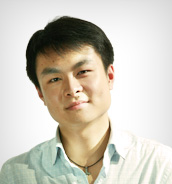47. According to the author, what may be the possible carriers of bird flu?
48. The main sources of influenza viruses in lake water are ________, which may stay infectious for up to 30 days.
49. By saying "bird flu viruses appear to exist in ducks in a low-pathogenic form" (Para. 6), the author suggests that infection ________.
50. On what condition can the birds spread the influenza through migration?
51. According to the study team, ________ is a practice that can encourage transmission of the bird flu.
Section B
Directions: There are 2 passages in this section. Each passage is followed by some questions or unfinished statements. For each of them there are four choices marked [A], [B], [C] and [D]. You should decide on the best choice and mark the corresponding letter on Answer Sheet 2 with a single line through the center.
Passage One
Questions 52 to 56 are based on the following passage.
For about three centuries we have been doing science, trying science out, using science for the construction of what we call modern civilization. Every dispensable item of contemporary technology, from canal locks to dial telephones to penicillin, was pieced together from the analysis of data provided by one or another series of scientific experiments. Three hundred years seems a long time for testing a new approach to human inter-living, long enough to set back for critical appraisal of the scientific method, maybe even long enough to vote on whether to go on with it or not. There is an argument.
Voices have been raised in protest since the beginning, rising in pitch and violence in the nineteenth century during the early stages of the industrial revolution, summoning urgent crowds into the streets on the issue of nuclear energy. "Give it back," say some of the voices, "It doesn't really work, we've tried it and it doesn't work. Go back three hundred years and start again on something else less chancy for the race of man."
The principle discoveries in this century, taking all in all, are the glimpses of the depth of our ignorance of nature. Things that used to seem clear and rational, and matters of absolute certainty-Newtonian mechanics, for example-have slipped through our fingers; and we are left with a new set of gigantic puzzles, cosmic uncertainties, and ambiguities. Some of the laws of physics are amended every few years; some are canceled outright; some undergo revised versions of legislative intent as if they were acts of Congress.
Just thirty years ago we call it a biological revolution when the fantastic geometry of the DNA molecule was exposed to public view and the linear language of genetics was decoded. For a while, things seemed simple and clear: the cell was a neat little machine, a mechanical device ready for taking to pieces and reassembling, like a tiny watch. But just in the last few years it has become almost unbelievably complex, filled with strange parts whose functions are beyond today's imagining.
It is not just that there is more to do, there is everything to do. What lies ahead, or what can lie ahead if the efforts in basic research are continued, is much more than the conquest of human disease or the improvement of agricultural technology or the cultivation of nutrients in the sea. As we learn more about fundamental processes of living things in general we will learn more about ourselves.
52. What CANNOT be inferred from the first paragraph?
[A] Scientific experiments in the past three hundred years have produced many valuable items.
[B] For three hundred years there have been people holding a hostile attitude toward science.
[C] Modern civilization depends on science so man supports scientific progress unanimously.
[D] Some people think three hundred years is not long enough to set back for critical appraisal of scientific method.
53. The principle discovery in this century shows ________.
[A] man has overthrown Newton's laws of physics
[B] man has solved a new set of gigantic puzzles
[C] man has lost many scientific discoveries
[D] man has given up some of the once accepted theories
54. Now scientists have found in the past few years ________.
[A] the exposure of DNA to the public is unnecessary
[B] the tiny cell in DNA is a neat little machine
[C] man knows nothing about DNA
[D] man has much to learn about DNA
55. The writer's main purpose in writing the passage is to say that ________.
[A] science is just at its beginning
[B] science has greatly improved man's life
[C] science has made profound progress
[D] science has done too little to human beings
56. The writer's attitude towards science is ________.
[A] critical [B] approving [C] neutral [D] regretful
Passage Two
Questions 57 to 61 are based on the following passage.
Here amid the steel and concrete canyons, green grass grows. A hawthorn tree(山楂树) stands in new soil, and freshly dug plants bend in the wind.
But Chicago City Hall here seems an unlikely spot for a garden of any variety—especially 20,000 square feet of gardens—on its roof.
As one of a handful of similar projects around the country, the garden is part of a $1.5 million demonstration projected by the city to reduce its "urban heat islands", said William Abolt, the commissioner of the Department of Environment.
Heat islands-dark surfaces in the city, like rooftops-soak up heat. The retention can bake a building, making it stubborn to cooling.
The roof of City Hall, a 90-year-old gray stone landmark on LaSalle Street in the heart of downtown, has been known to reach temperature substantially hotter than the actual temperature on the street below.
相关推荐:
2010年大学英语六级考试高分冲刺必备汇总 名师总结:英语六级完形务必掌握的重要表达














